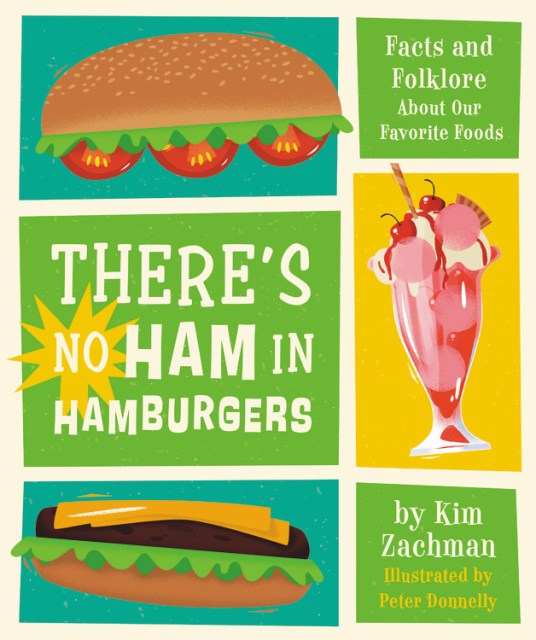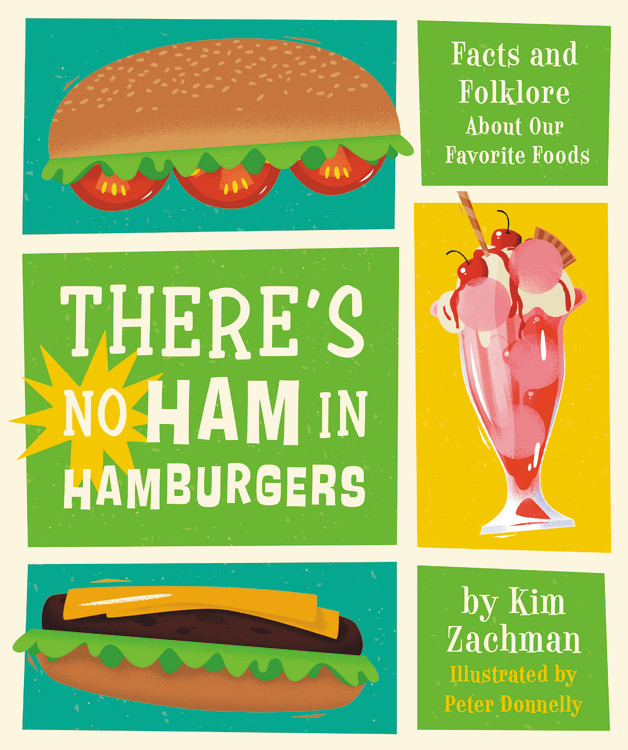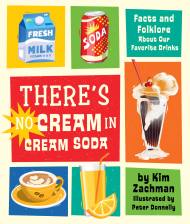Promotion
Use code MOM24 for 20% off site wide + free shipping over $45
There's No Ham in Hamburgers
Facts and Folklore About Our Favorite Foods
Contributors
By Kim Zachman
Illustrated by Peter Donnelly
Formats and Prices
Price
$16.99Price
$22.99 CADFormat
Format:
- Hardcover $16.99 $22.99 CAD
- ebook $9.99 $12.99 CAD
This item is a preorder. Your payment method will be charged immediately, and the product is expected to ship on or around April 6, 2021. This date is subject to change due to shipping delays beyond our control.
Also available from:
From hot dogs and hamburgers to ice cream and pizza, this fascinating book is full of fun facts and stories of the origins of some of America's most popular foods.
Why is there no ham in hamburgers? How did we make ice cream before we could make ice? How did hot dogs get their name? From the origins of pizza (which got a big boost from Clarence Birdseye, of all people) to the Cornell professor who invented chicken fingers, There's No Ham in Hamburgers has all the ingredients for an entertaining and educational middle-grade read. Packed with informative sidebars, recipes, and experiments, along with fabulously funny illustrations by Peter Donnelly, this book is a reading recipe that kids will sink their teeth into!
A Junior Library Guild Gold Standard Selection
2024 Texas Topaz Nonfiction Reading List Selection
Genre:
-
"Accessible and engaging…. A high-interest, tasty treat."Booklist
-
"Told in a breezy, conversational style, the book walks readers through the often surprisingly far-ranging history and folklore of favorite foods from pizza to peanut butter. A good choice for any young gourmand’s bookshelf."Kirkus Reviews
-
"This title would be a great addition to classes studying food and nutrition. Some parts can even be used in chemistry class. It would also be great a supplement when discussing how an idea or invention is created and then morphs over time, especially when the impact of a changing culture is considered."School Library Connection
-
"Delightfully described and illustrated with amusing cartoon characters, this account of familiar foods engagingly combines history with the immigration story . . . . Add this selection to home, school, and office; for both young and old to savor as it holds a treasure of pleasure."San Francisco Book Review
-
"An excellent and fun read for any kid or adult foodie."School Library Journal
-
“Scientific concepts appear in highlighted text boxes and include an explanation for why chips become stale and how milk chocolate requires overcoming the tendency for oil and water to separate. At least one recipe also doubles as an easy experiment, inviting readers to measure the temperature of ice before and after making ice cream . . . . [R]eaders of all ages are likely to learn something new about food.”Science magazine
- On Sale
- Apr 6, 2021
- Page Count
- 144 pages
- Publisher
- Running Press Kids
- ISBN-13
- 9780762498079
Newsletter Signup
By clicking ‘Sign Up,’ I acknowledge that I have read and agree to Hachette Book Group’s Privacy Policy and Terms of Use








